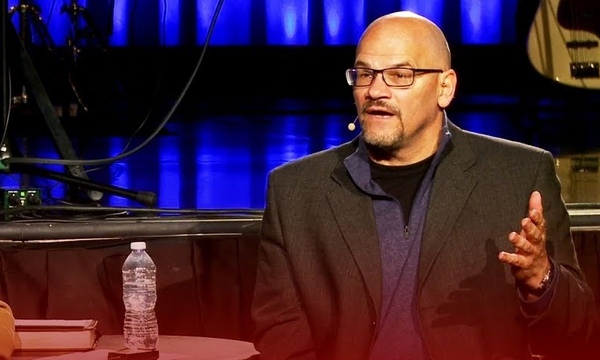Pope Benedict XVI announced on Sunday, June 28, 2009 that the remains said to be the Apostle Paul’s are indeed the actual Saint’s remains. Through scientific testing, the pope announced that carbon dating tests “seem to confirm” that the bones which were recently unearthed after archeologists opened the marble sarcophagus under the Basilica of St. Paul Outside the Walls, do belong to the Roman Catholic saint. Biola University’s Talbot School of Theology Chairman and Professor of New Testament, Clinton E. Arnold, responded to the recent declaration, as many are skeptical of the find.
Have Archaeologists Found the Remains of the Apostle Paul?
On Sunday evening, June 28th, Pope Benedict XVI made the announcement that the bones of the Apostle Paul had been discovered in a tomb under a church in Rome. This news was immediately treated as something of a sensation and picked up by media outlets around the world. For those hearing this news, it immediately raises two questions: (1) are they really the bones of the Apostle Paul? and (2) what is the significance of this discovery for Christians?
The truth is that we will never know with absolute certainty if the bones are those of the famous Apostle. Yet these bones have a very reasonable claim to authenticity. One of the strongest pieces of evidence is a second-century tradition recorded by Eusebius who reports the testimony of a Roman church leader indicating that the remains of Paul are marked out by a monument located on the Ostian Way (about 2.5 miles south of the old Roman forum on the East bank of the Tiber river). A basilica was built over this spot in the fourth century, but was destroyed by fire in 1823. During excavation work for the present basilica of St. Paul Outside the Walls, workmen found a slab of stone underneath the place of the altar bearing a fourth-century Latin inscription, “To Paul, apostle and martyr.” Thus, there is a long, continuous tradition associating this site with the burial place of Paul. This tradition combined with the carbon dating enhance the plausibility of these being the actual bones of Paul, but there is still plenty of room for error.
It really should come as no surprise when archaeologists find the bones of Paul or any other Apostle. No scholar doubts the historical existence of the Apostle Paul. For many Catholic Christians, the bones are likely to become an object of veneration. Some will endeavor to touch the bones in an effort to seek healing or an impartation of grace.
Paul himself, I believe, would want to point people to the risen and living Christ for salvation, healing, and grace. He claimed that the most important thing in life was the good news that he proclaimed: “For I delivered to you as of first importance what I also received: that Christ died for our sins in accordance with the Scriptures, that he was buried, that he was raised on the third day in accordance with the Scriptures” (1 Cor 15:3-4). The fact that he was killed for making this known bears eloquent testimony to its importance.
Written by Clinton E. Arnold, Chairman and Professor, The Department of New Testament at Talbot School Theology, Biola University.
Introduction written by Jenna Bartlo, Media Relations Coordinator. Jenna can be reached at (562) 777-4061 or through email at jenna.l.bartlo@biola.edu.
The opinion and viewpoint expressed in this article is that of the author. As a diverse community and within the context of our own theological convictions and community standards, Biola University encourages freedom of thought and expression by its faculty as first responders to relevant news and events.
 Biola University
Biola University


_(1).jpg)